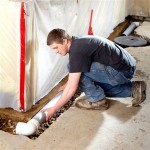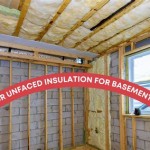How to Fix Radon in Basement
Radon is a naturally occurring radioactive gas that can accumulate in basements and pose a health risk. If you suspect that your basement may have high radon levels, it's critical to take the necessary steps to mitigate the problem. Here's a comprehensive guide on how to fix radon in basement:
1. Test for Radon
The first step in addressing radon in your basement is to test for its presence. You can purchase a radon test kit from a home improvement store or hire a professional to conduct the test. Follow the instructions carefully when using a test kit, as improper usage can lead to inaccurate results.
2. Identify the Radon Source
Once you've confirmed that your basement has high radon levels, it's essential to identify the source of the radon. Common sources include cracks in the foundation, sump pumps, and crawl spaces. Inspect your basement thoroughly and seal any visible cracks or gaps with caulk or expanding foam.
3. Seal the Basement
Sealing the basement is a crucial step in preventing radon from entering your home. Use a combination of caulk, weatherstripping, and expanding foam to seal any gaps or cracks around windows, doors, and pipes. Pay particular attention to areas where the foundation meets the walls and floor.
4. Install a Radon Mitigation System
If sealing the basement is insufficient to reduce radon levels, you may need to install a radon mitigation system. This system typically involves installing a fan that draws radon from the basement and vents it outside your home. There are various types of radon mitigation systems available, so consult with a radon mitigation specialist to determine the most appropriate option for your basement.
5. Increase Ventilation
Increasing ventilation in your basement can help reduce radon levels by diluting the concentration of the gas. Open windows and doors as often as possible, especially during the summer months. Consider using a fan to circulate air in the basement and promote air exchange.
6. Monitor Radon Levels
Once you've implemented radon mitigation measures, it's essential to monitor radon levels to ensure that they are effectively reduced. You can purchase a continuous radon monitor that will provide real-time readings of the radon levels in your basement. If the levels remain high despite mitigation efforts, consider consulting with a radon mitigation professional for further assistance.
Addressing radon in your basement is essential for protecting the health of your family and preventing the risk of radon-related illnesses. By implementing these steps, you can effectively reduce radon levels in your basement and create a healthier living environment.

Reducing Radon In Your Home National Program Services

Radon In The Home Mass Gov

What Kind Of Radon Reduction System Is Best Trinity Electrical Services Inc

Radon Mitigation So You Have Now What

Radon Mitigation Blackburn Foundation Repair

Do I Really Need Radon Mitigation Utah Services

Radon Problems When Selling A Home Poughkeepsie Middletown Newburgh Mitigation Testing Kits In New York

Radon Mitigation So You Have Now What

Radon Resistant New Construction Information For If You Are Having Your Home Built

How A Vapor Barrier Works As Radon News And Events For 3 Pros Basement Systems
See Also








